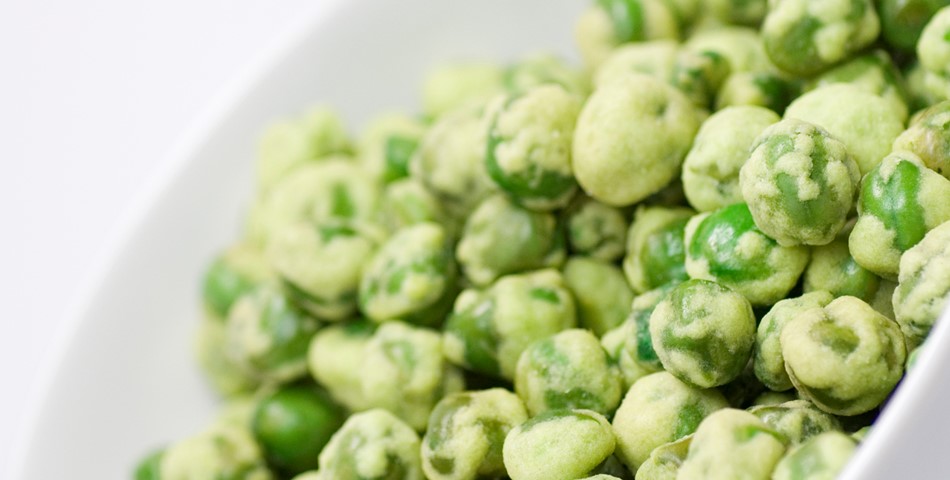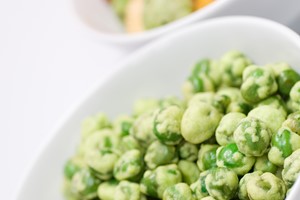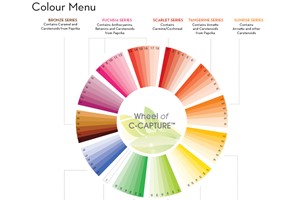It won’t be long until the turn of the year, and once again this will bring typical New Year’s resolutions such as “healthier nutrition” with it. This time though, it seems like 2019 might be the year for consumers to really stick with their food-related resolutions: in the food and beverage market, all signs are pointing to a plant-based revolution. Santhosh Thankappan, Sales Director at GNT Middle East, producer of the leading global brand in Coloring Foods EXBERRY®, analyses the potential, requirements and shape of this development.
Plant-based foods are on the rise and taking over all product categories – from beverages to dairy and bakery products as well as savory applications such as meat replacements and snacks. Even Nestlé, the largest food company in the world, is convinced the trend is here to stay. Why is this?
Roots of the plant-based movement
One key reason is that today’s ‘global knowledge’ society is leading to much more consumer awareness. Shoppers have a broader sense of how actions affect the future of the planet and of which food ingredients (artificial additives for instance), may have a bad impact. This awareness is encouraging shoppers to look for clean, clear and ethical ingredients.
Another reason behind the growth of interest in plant-based foods is that there is an expanding group of people – especially Millennials – who are shifting away from consuming animal products due to their increasing interest in animal welfare and sustainability. In the last three years in the UK alone, the number of people identifying themselves as vegan has grown by 350 percent. In the US, this increase was even higher, at 600 percent. On social media the trend is also unstoppable: #vegan is the most popular diet on Instagram, approaching 62 million posts. And thanks to the popularity of a cruelty-free lifestyle, more and more flexitarians – people who reduce the consumption of meat – have appeared.
However, vegan nutrition has often been associated with very limited choices and boring flavors. By focusing more on the positive notion of including more natural ingredients including fruits, vegetables and plants into one’s diet, a stronger link can then be made to indulgence and healthiness. This rethinking is leading to plant-based nutrition becoming mainstream. Between 2013 and 2017, plant-based claims on products increased by 62 percent globally.
Success factors for plant-based product development
Despite the motivation to change their behavior for the good of the planet, consumers have high expectations of the products they buy. In addition to being free from animal and artificial ingredients, it is highly important that plant-based food tastes and looks good. And for several reasons, color is becoming even more important than flavor: even the tastiest product is not enjoyable without an appealing look. Color influences taste experiences and is the primary indicator for quality and freshness. To signal health and nutritional value, the right visual design of a product is key. Besides, color is the first characteristic that customers recognize when browsing supermarket shelves: we eat with our eyes.
Waking up to the importance of plant-based color
When designing plant-based products, manufacturers should see the concept through to every ingredient, including the coloring method. Coloring Foods – such as the market-leading brand EXBERRY® – are made exclusively from raw materials such as fruit, vegetables and edible plants. During the production process, only gentle physical methods such as chopping, filtrating and concentrating are used, which means that Coloring Foods are classified as foods. This makes them very different from other colorants, which are produced either with the aid of chemical processes and auxiliary agents or synthetically. Thanks to their natural origins and processing method, Coloring Foods can be labelled simply under their ingredient names, e.g. “Coloring Food (concentrate of elderberries, carrot)” or “Concentrates (elderberries, carrot)”.
Potential for innovation and advancement
So how can manufacturers seize the opportunity to make the most of plant-based foods? When looking at two categories that have significantly shaped the movement – dairy and beverages – the potential becomes more and more apparent. In the dairy category, the plant-based trend already emerged some time ago. But its full capability has not been tapped yet. Here again, the source of this trend was the rising number of vegans (and lactose-intolerant people) interested in plant protein that can be delivered by dairy alternatives made with seeds, nuts, coconuts and grains. Today, products with low sugar, fat and lactose are in high demand among a wider population, as they are seen as supporting an active and healthy lifestyle. Due to this, it is estimated that the vegan yogurt market will be worth USD 7.4 billion by 2027. Opportunities for innovation are arising from the use of unexpected ingredients. In the US, for instance, savory yogurts in flavors such as ginger, turmeric, avocado, carrot or pumpkin are a huge market. In other regions, this category is still underdeveloped. Combined with eye-catching colors, such as bright green or orange, all sorts of products can be created that really stand out on the shelf.
Likewise, the beverage category has long been focused on health and wellness. Lighter refreshments, cold brewed drinks and fermented beverages have been key themes, with average annual growth rates of up to 24 percent for launches of products with botanical claims. Nowadays, ‘superpowders’ are boosting this category. These can be used by consumers at home to spice up smoothies and juices as well as to create plant-based coffee lattes in all colors of the rainbow. To create this superweapon, manufacturers need to have special ingredients available: turmeric, mushroom and beetroot powders all have the potential to become stars due to their bright colors.
Tackling technical challenges to develop perfect products
By now, the impact of demands for plant-based products has reached all categories. In bakery, the average annual growth tracked for launches with a vegan positioning in the Middle East was 82 percent between 2014 and 2017. To support a healthy, plant-based image, combinations with savory or herbal ingredients are ideal: In Europe, flavors such as turmeric, parsnip, beetroot and carrot are very much worth considering; in Asia, garden pea, matcha tea and jasmine are up-and-coming and are a perfect fit for cakes, pastries or sweet biscuits.
To achieve the perfect natural hue for such flavored products, the devil is in the detail. Take the example of a vibrantly colored cake with icing. Some colors, such as red or purple, will be affected by the pH of the batter and/or icing so that adding acidic ingredients will yield brighter results, while the performance of yellow, orange or brown is barely affected by pH. Expertise in finding the right raw material or combining several ones is crucial. Moreover, the baking process also has to be considered. A lower baking temperature for a longer period of time may optimize color retention and avoid excessive browning. Besides, in specific areas, such as the Middle East, these challenges are made more difficult by the climate and the often imperfect storage conditions.
In order to successfully formulate products using natural color concentrates, it is important to be familiar with these considerations and know how different ingredients in the recipe can affect performance. Even though Coloring Foods are simple and easy to handle, every application has its own specifics. This is why EXBERRY® color experts work with manufacturers on-site to provide the perfect, high-performing hue and guarantee a fast and flawless transition process.
Where “plant-based” instead of “vegan” is most promising
In market categories that are inherently savory, another development catches the eye: creatively positioning products as delicious rather than as a vegan or vegetarian substitute is a highly promising way to enhance a product’s appeal. This applies both to ready meals and to snacks. Protein-rich, healthy snacks for in-between are something people often carry with them these days – whether as a treat in itself or as a portable extra for salad kits. Riding the plant-based wave of success, mushrooms are now entering the snacking market as an alternative to meat jerky.
As millennials tend to be functional or emotional snackers, manufacturers need to ensure they add beneficial value and variety to this category to eliminate the risk of boredom. This can be done by using positive and indulgent language and adding color to make the food more attractive to the senses. Excitement can for instance be achieved by creating a deep green for kale-based products or a vibrant orange-yellow for turmeric-flavored snacks.
Time for action
2019 will feel the full force of plant power. Eating green delivers huge potential. To benefit from this development and to make their products future-proof, manufacturers can draw upon numerous opportunities for category innovation and advancement. In doing so, they need to see the concept through to the last ingredient and take account of the importance of color. With Coloring Foods, they can rely on excellent performance as these natural color concentrates meet the same quality expectations as synthetic or natural colorants when it comes to variety, brilliance, shelf life and stability.
Santhosh Thankappan
Sales Director
GNT Middle East FZ LLC












